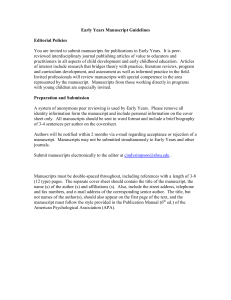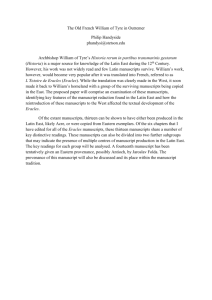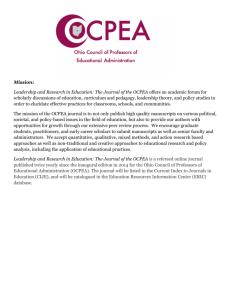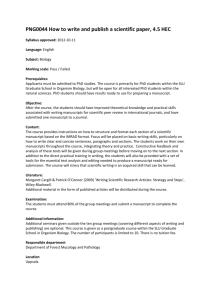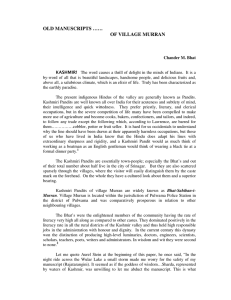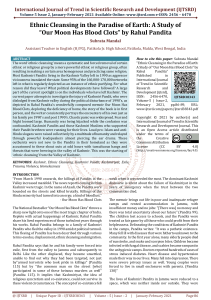Manuscript:
advertisement
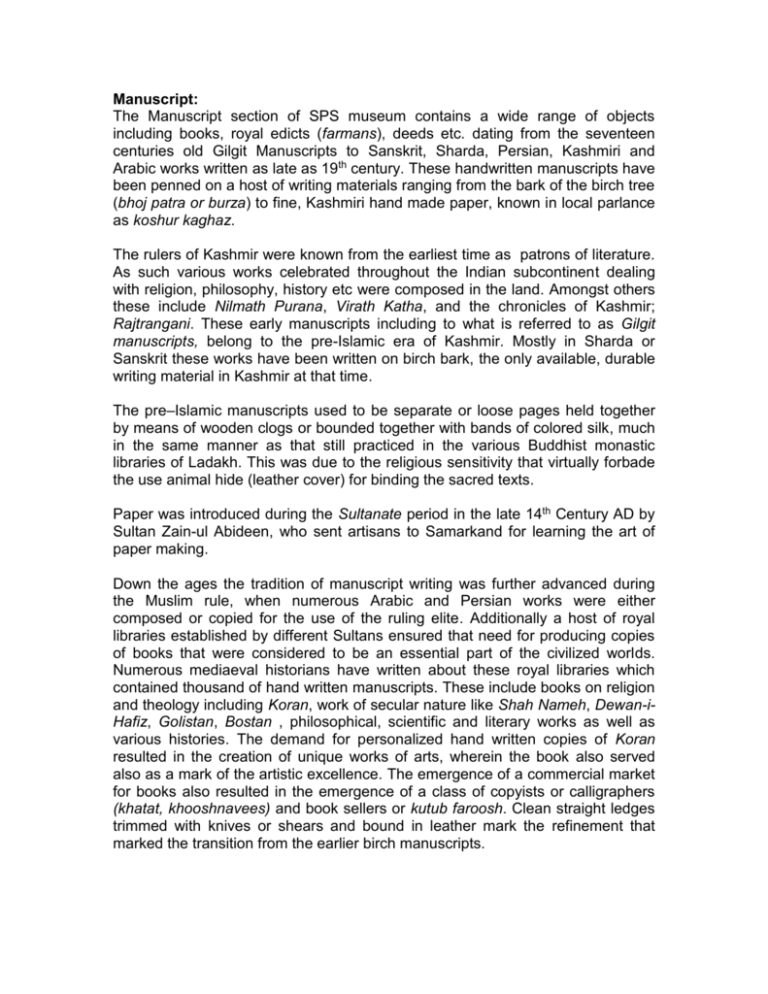
Manuscript: The Manuscript section of SPS museum contains a wide range of objects including books, royal edicts (farmans), deeds etc. dating from the seventeen centuries old Gilgit Manuscripts to Sanskrit, Sharda, Persian, Kashmiri and Arabic works written as late as 19th century. These handwritten manuscripts have been penned on a host of writing materials ranging from the bark of the birch tree (bhoj patra or burza) to fine, Kashmiri hand made paper, known in local parlance as koshur kaghaz. The rulers of Kashmir were known from the earliest time as patrons of literature. As such various works celebrated throughout the Indian subcontinent dealing with religion, philosophy, history etc were composed in the land. Amongst others these include Nilmath Purana, Virath Katha, and the chronicles of Kashmir; Rajtrangani. These early manuscripts including to what is referred to as Gilgit manuscripts, belong to the pre-Islamic era of Kashmir. Mostly in Sharda or Sanskrit these works have been written on birch bark, the only available, durable writing material in Kashmir at that time. The pre–Islamic manuscripts used to be separate or loose pages held together by means of wooden clogs or bounded together with bands of colored silk, much in the same manner as that still practiced in the various Buddhist monastic libraries of Ladakh. This was due to the religious sensitivity that virtually forbade the use animal hide (leather cover) for binding the sacred texts. Paper was introduced during the Sultanate period in the late 14th Century AD by Sultan Zain-ul Abideen, who sent artisans to Samarkand for learning the art of paper making. Down the ages the tradition of manuscript writing was further advanced during the Muslim rule, when numerous Arabic and Persian works were either composed or copied for the use of the ruling elite. Additionally a host of royal libraries established by different Sultans ensured that need for producing copies of books that were considered to be an essential part of the civilized worlds. Numerous mediaeval historians have written about these royal libraries which contained thousand of hand written manuscripts. These include books on religion and theology including Koran, work of secular nature like Shah Nameh, Dewan-iHafiz, Golistan, Bostan , philosophical, scientific and literary works as well as various histories. The demand for personalized hand written copies of Koran resulted in the creation of unique works of arts, wherein the book also served also as a mark of the artistic excellence. The emergence of a commercial market for books also resulted in the emergence of a class of copyists or calligraphers (khatat, khooshnavees) and book sellers or kutub faroosh. Clean straight ledges trimmed with knives or shears and bound in leather mark the refinement that marked the transition from the earlier birch manuscripts. A fine specimen of Kashmiri book illumination is located in university library. This manuscript of Nazami Ganjvi’s Khusru va Shirin was compiled in Kashmir during the late Mughal period and is dated 1162 AH (1749 AD). The manuscript is written on a fine waxy koshur kaghaz in ornate Persian nastaliq script and bound in a fine stamped and gild leather binding. Another fine specimen which has been dated to early Afghan period is copy of Koran written in 1800. This 324 page (20.5x13 cm) manuscript contains three beautiful double paged “unwans” or chapter pages with beautiful rendering in arabesque. The manuscript is bound in gilt leather binding with a triangular flap jutting from the back cover that is tucked under the front cover a technique that is universally associated with the Islamic tradition of bookbinding. The work is also written on the locally made koshur kaghaz. The art of making the kaghaz was centered on Kagazhgari Mohalla, a residential quarter on the outskirts of Srinagar were thirty two paper factories were operating as late as the latter part of 19th century. The paper was divided into fermaishi, damushti, dakhi, rangi, kalamdani and sher jangi on the basis of paper quality, with fermaishi being regarded as the best quality paper.The paper is distinguished by its fine gloss and polish, its evenness, and its white wax like colour and appearance. The paper is also washable. The nature of the paper made it ideal for creating some of the best works of calligraphy. Two of the prominent calligraphers at the Mughal court hailed from Kashmir.. The names like Mulla Jamal, Mohamad Hussain (who entered Mughal court after annexation of Kashmir by Mughals and was given the title of Zareen Qalam), Ali Chaman Kashmiri are best known representations of this tradition. The Islamic tradition of calligraphy was blended with painted hashia (border) and ornamentation thereby creating the finest examples of book illumination. Some of the works used to be embellished with miniature paintings as well. . The museum collection contains a copy of Firdousi’s Shah Nameh which is illustrated by small coloured miniature paintings. The manuscripts at the SPS museum also reveal that during Sultanate period (1320-1585 AD) Sharda script was extensively used along side Persian in all the decrees, both religious and secular. Many bilingual manuscripts are available in various manuscript collections including those at the SPS Museum, the most prominent being the Vasiqanama, pertaining to the ownership of the property at Ziarat Makhdoom Saheb (984 AH).
